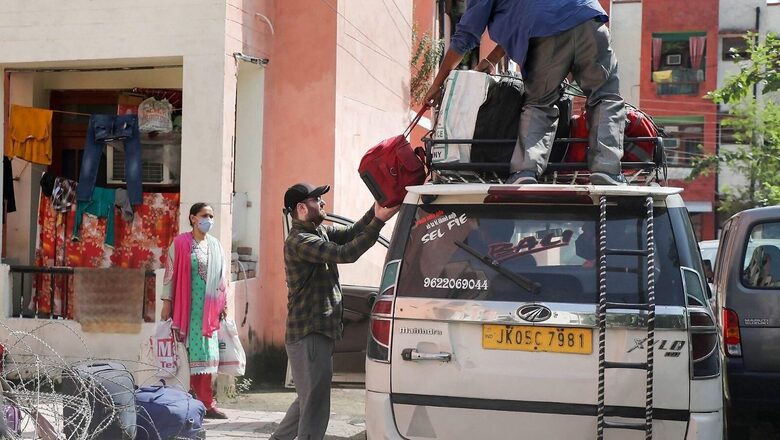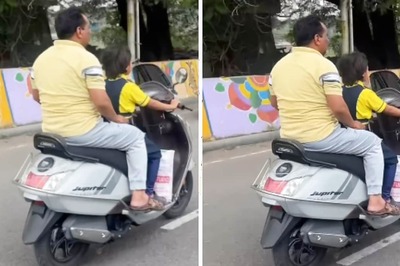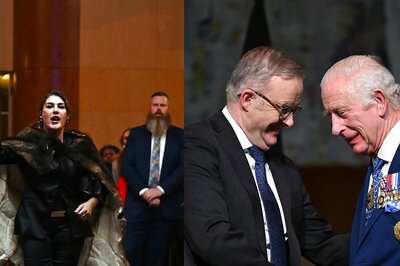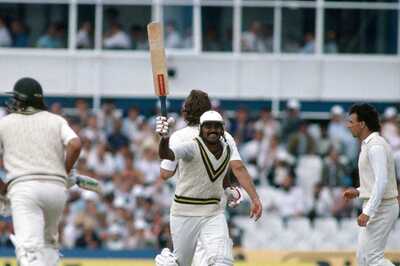
views
“Kashmir remains unsafe for the Hindus even after three decades of our exodus. We can’t trust the people there, whatever be the assurances. You were telling me that we should rebuild our ancestral house in Kashmir or build a new house somewhere in Srinagar. Wake up and smell the coffee,” said my mother after hearing about the targeted killings of the minorities by Islamist terrorists in Kashmir.
“They forced us to leave our watan and they will never want us to come back,” added my octogenarian maternal grandmother while reminiscing about towns of Anantnag and Bijbehara in South Kashmir. I didn’t have anything to say this time. Otherwise, I would fill them with hope about our beloved homeland. Both of them haven’t been to Kashmir since the forced exodus of Kashmiri Pandits in 1990.
In his recent article, “In Valley, no return to ’90s”, Amitabh Mattoo, former Cabinet-level advisor to Jammu and Kashmir chief minister Mufti Mohammad Sayeed and professor at Jawaharlal Nehru University, argues that the recent targeted killings of the minorities in Kashmir may open up a new window of reconciliation between the majority Muslims and the minority Pandits. Nothing could be further from the truth.
The recent killings not only remind Pandits of their selective targeting by terrorists in 1989-90 but also renew the sense of betrayal. Instead of reconciliation, such incidents have yet again widened the trust deficit between Pandits and Muslims. Notably, it reinforces the fact that the cause of Tehreek-e-Azadi is above everything else.
READ | Opinion: Recent Killings Show Kashmiriyat Distorted by Islamism; It Needs Reform
We cannot delink “deep angst within the Kashmiri Muslims over government policies” with “real reconciliation between two communities”. That will be disingenuous. What is the deep angst about which Mattoo avers? Isn’t it about the Modi government’s policies that attempt to fix the imbalances in J&K? Such corrective measures are not just for the Pandit community but also for other communities of J&K who have received unfair treatment in the last 70 years. However, like always, a Pandit is made the villain and scapegoat in the Kashmir saga. Whatever steps New Delhi takes in the matters pertaining to J&K, Pandits face the wrath on the ground, particularly in Kashmir, as they are regarded as symbols of India.
We have often heard Muslims proclaiming that Pandits are welcome back in their homeland. However, such proclamations fall flat when the same Muslims show resentment against policies if they look even slightly favourable to Pandits. Giving rights to a dispossessed community should not be a problem — that’s just basic. But even the basics — the right to live in one’s home with a sense of security, dignity and liberty — are opposed in Kashmir.
The much-revered Shankaracharya temple in Srinagar is often cited to show the façade of Hindu existence in Kashmir. What is not mentioned are the temples that have been desecrated and encroached — many of them non-existent now. Even the gods and goddesses had to leave their abodes in 1990 when the madness of jihad took over. Very recently, the Bhargshikha Devi temple in Mattan, Anantnag, was desecrated by the Islamists who didn’t come from Pakistan.
The year 1990 in Kashmir wasn’t an aberration. It was the goriest manifestation of a foreign ideology in post-Partition India under the modern democratic setup. The earliest display of the same ideology was the destruction of the Martand Sun Temple in Anantnag in the 15th century. That the temple remains majestic even in ruins after 600 years bears testimony of the resilience of aboriginal Hindu Pandits of Kashmir.
Given Mattoo’s emphasis on “talking, talking and more talking”, what should the Pandits talk about when their existence is mocked through relentless propaganda? Anti-Pandit bigotry displayed by many people from the majority community is not uncommon on social media platforms like Facebook, Twitter and Clubhouse. To even suggest that there is space for Kashmiri Pandits to come back to Kashmir would be turning a blind eye to the ground reality. They get labelled as ‘collaborator’, ‘informer’, ‘RSS stooge’, and ‘Hindutva agent’ and then are easily killed. Whether it’s 1990 or 2021, Pandits remain the soft targets in Kashmir.
What should Kashmiri Pandits reconcile to? To the trivialisation of their exodus in 1990 and subsequent exile by the majority community? To the myth, often hurled at them, that Jagmohan, then J&K Governor, was responsible for their exodus? To slurs such as ‘Pandits ran away’ and ‘Pandits are cowards who couldn’t fight back’ because they feared for their lives when the whole of Kashmir was up against the Indian state? To the deaths of their old and young due to scorching heat and snakebites in Jammu? To selling of their ancestral houses and lands at peanuts because they needed their own shelter in Jammu and other parts of the country? To encroachment of their properties after they left Kashmir? To the lonely battles for justice for more than three decades? To fading away of their generations in exile?
What does reconciliation mean if it is not based on truth and acknowledgement of the wrongdoings by the majority community of Kashmir in 1989-90? The foundation of reconciliation between Muslims and Pandits will be built on the bitter truth of 1990 and not on perverted narratives which emanate from Kashmir.
ALSO READ | Why Targeted Killings of Civilians in Kashmir are Not Similar to the 1990 Episode
As far as confidence-building is concerned, the onus squarely lies on the majority Muslims, and not Pandits. Pandits didn’t break the social fabric in Kashmir. Pandits didn’t pick up guns and started killing people in the name of religion. Pandits only minded their business and they paid a heavy price for it. Instead of tacitly supporting azadi and terming those who choose the path of violence as ‘misguided’, the Muslims of Kashmir ought to call out Islamist terrorism and take steps to prevent the radicalisation in their own society. Only that will translate into confidence among Pandits. Otherwise, hollow words and banal assurances will be a merry-go-round from time to time.
There do exist cordial relations between some Muslims and Pandits of Kashmir at an individual level, but this can’t be extrapolated to the entire community. Importantly, cordiality doesn’t disregard the betrayal of 1990. The dynamics of the Hindu-Muslim relationship changes at the larger community level because of the contrasting standpoints (Kashmir’s civilisational connect with the rest of India, accession of J&K to the Union of India in 1947, the mass exodus in 1990, etc.)
Why shouldn’t the Government of India intervene? It is the state’s responsibility to rehabilitate its citizens back in their homes. However, the Indian state has completely failed to reverse the exile of the Pandit community in the last 31 years.
We need to stop veiling the realities of Kashmir just because the phoney secularism has to be shown to the outside world. The reality surfaces time and again, and stares at us even when there are attempts to conceal it. The rehabilitation of Pandits in Kashmir is interlinked with the security situation which is hinged on the issue of jihad. We need to talk about the elephant in the room, i.e., jihad and not gloss over it which has resulted in loss of scores of men and women from both communities. Let’s start calling spade a spade for starters. When we clearly identify the problem, only then will we be able to fix it.
There isn’t light at the end of the tunnel as of now — only dark abyss. There will be light only when Kashmir’s majority community will tread the path of its saints, poets, and scholars — Abhinavagupta, Anandavardhana, Kalhana, Lal Ded, Nund Rishi, Roop Bhawani, Shamas Faqir, Rasul Mir, etc. — and categorically shun the path of violence and destruction proposed by the ideologues of Islamist terrorism such as Maqbool Bhat, Amanullah Khan, Syed Ali Shah Geelani, Shabir Ahmad Shah, Syed Salahuddin, and Asiya Andrabi.
The writer is an author and political commentator. He is the co-editor of a book on Kashmir’s ethnic minority community titled ‘A Long Dream of Home: The Persecution, Exodus and Exile of Kashmiri Pandits’, published by Bloomsbury India. The views expressed in this article are those of the author and do not represent the stand of this publication.
Read all the Latest News , Breaking News and IPL 2022 Live Updates here.




















Comments
0 comment